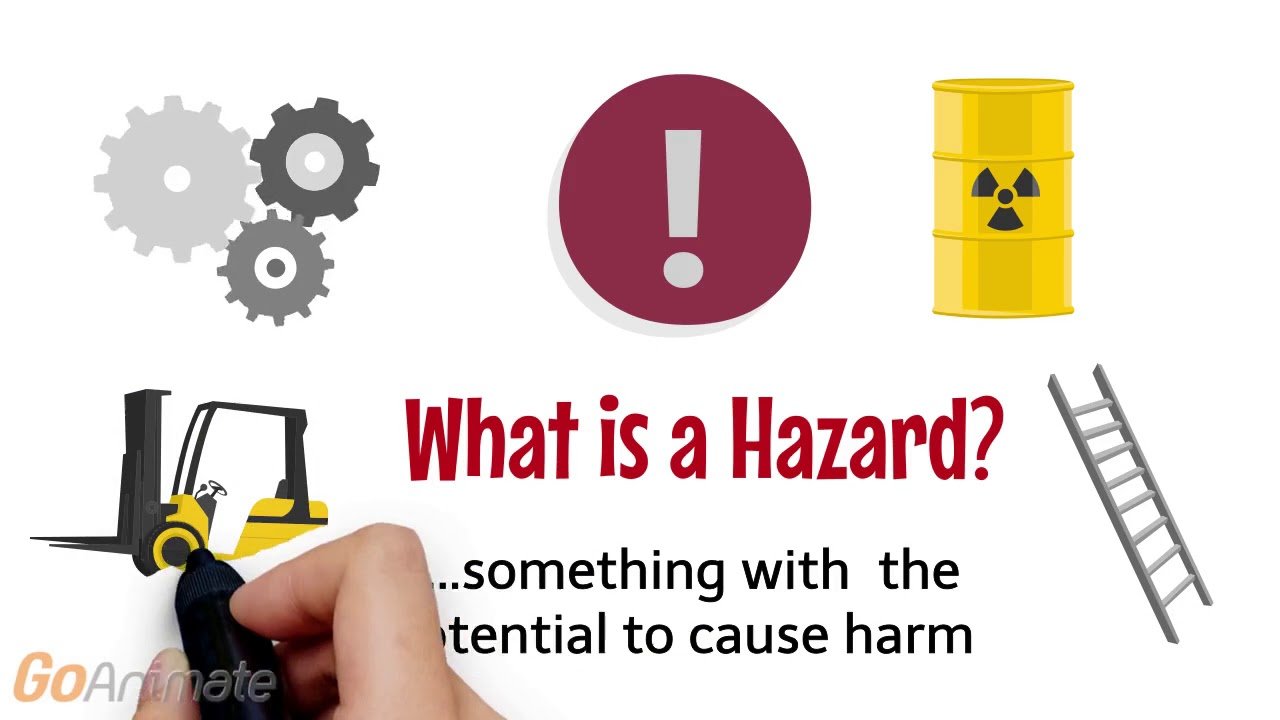In the UK, ‘COSHH’ is the law that requires employers to control substances that are hazardous to health. You can prevent or reduce workers exposure to hazardous substances by:

Most businesses use substances, or products that are mixtures of substances. Some processes create substances. These could cause harm to employees, contractors and other people.
Sometimes substances are easily recognised as harmful. Equally, common household substances such as paint, bleach or dust from natural materials may also be harmful.
In other circumstances, the potential harm caused by a substance or material may not be easily recognised or even understood.
In the UK, COSHH stands for ‘Control of Substances Hazardous to Health’ and under the Control of Substances Hazardous to Health Regulations 2002, employers need to either prevent or reduce their workers’ exposure to substances that are hazardous to their health.
COSHH covers most substances that are hazardous to health. It’s very important to be aware that these ‘substances’ can take many forms and include:


And that’s not all! The COSHH regulations also cover these…
It’s also worth noting the key hazardous materials that the COSHH Regulations do not cover. You may have heard of them before…

You are probably already aware of many risks in your trade or industry. A COSHH assessment concentrates on the hazards and risks from substances in your workplace.
Remember that hazards and risks are not limited to substances labelled as ‘hazardous’.
Here are 5 steps to making a COSHH assessment, beginning by walking around your workplace:
Examples include processes that emit dust e.g. cutting concrete, fume e.g. soldering, vapour e.g. use of solvents e.g. acetone for degreasing , mist e.g. spray painting or gas e.g. natural gas for heating i.e. gas boiler or gas being used for a production process; and skin contact with liquids, pastes and dusts.
Many hazardous substances have workplace exposure limits (WELs) – these will be listed in the SDS.
Depending on the risk profile of your process, you may need to carry out a quantitative measurement of the exposure.
This is commonly referred to as an ‘industrial hygiene’ assessment.

Get safety data sheet (SDS or MSDS’s – take a good look through them. You will get the detail on the hazard or COSHH symbols that you will see on the labels, for example.
It will also provide you with recommended protective equipment required and storage advice.

Examples include fume from welding or soldering, mist from metalworking, dust from quarrying, gases from silage.
Look at the HSE web pages for your trade or industry – Your Industry.
Be aware, harmful substances can be created by mixing of chemicals and/or from industrial processes.
Get all of your the existing information that you have from risk assessments, method statements and so on (as well of course as speaking to people on the ground to make sure you’re not missing anything).
Record what control measures you already use – are these sufficient now that you’ve really taken into consideration the risk from the chemicals or substances that you have reviewed?

You may need to get the operators or engineers for the specific process involved to discuss ‘how’ the work is done to get the facts.
It will be highly valuable to also review information held by the business relating to accidents, incidents, near misses and concern reports.

Make sure to cover any direct or suspected ill-health reports that have occurred or been affected by work activities. Hopefully you have records of any low-level first aid events that have happened, those will inform you on what is happening on the ground too.
Examples include minor burns from splashes, nausea or migraine from solvents, coughing or chest pain from dusts/fumes etc.
You may want to keep your COSHH assessments for each substance as a stand alone document and/or link them to the relevant risk assessments or work processes, depending on what way your business operates.
It should be very clear as to which hazardous substances you use, how you use them and how the risk of harm is controlled.
The important thing is to make sure the relevant information is easily accessible and available to those that need it, at all times.
When it comes to control of substances hazardous to health, there’s something that you will really want to look out for – COSHH Symbols. If a substance is in the original container, it should have information relating to the hazardous properties of the chemical.

Download our free COSHH Assessment Template below – used alongside the contents of this post, it will help you to both stay compliant and protect your employees from harm.
Read on to find out more about COSHH…
The latest internationally-recognised hazard pictograms are very similar to those used in the old labelling system. They appear in the shape of a diamond with a distinctive red border and white background.
One or more pictograms might appear on the labelling of a single chemical.
Hazard symbols (as below) alert us to the presence of a hazardous chemical. They help us to understand how the chemicals we are using might cause harm to people or the environment.

WHAT DOES IT INDICATE? Extremely flammable gas, Flammable gas, Extremely flammable aerosol, Flammable aerosol, Highly flammable liquid and vapour, Flammable liquid and vapour, Flammable solid EXAMPLES: Lamp oil, petrol, nail polish remover

WHAT DOES IT INDICATE? May cause OR does cause various conditions, such as, respiratory irritation, drowsiness or dizziness, allergic skin reaction, serious eye or skin irritation Harmful if swallowed, in contact with skin etc. EXAMPLES: Washing detergents, toilet cleaner, coolant fluid

WHAT DOES IT INDICATE? The substance can be toxic/fatal if swallowed, in contact with skin or if inhaled EXAMPLES: Pesticide, biocide, methanol

WHAT DOES IT MEAN? Very toxic to aquatic life with long lasting effects Toxic to aquatic life with long lasting effects EXAMPLES: Pesticides, biocides, petrol, turpentine

WHAT DOES IT MEAN? May be corrosive to metals Causes severe skin burns and eye damage EXAMPLES: Drain cleaners, acetic acid, hydrochloric acid, ammoniac

WHAT DOES IT MEAN? May cause or intensify fire; oxidiser. May cause fire or explosion; strong oxidiser. EXAMPLES: Bleach, oxygen for medical purposes

WHAT DOES IT INDICATE? May be fatal if swallowed and enters airways, causes damage to organs, may damage fertility or the unborn child, may/suspected of cause cancer or genetic defects EXAMPLES: Turpentine, petrol, lamp oil

WHAT DOES IT INDICATE? Substance may be any of following: an unstable explosive, mass explosion hazard, severe projection hazard, fire, blast or projection hazard, may mass explode in fire. EXAMPLES: Fireworks, ammunition

WHAT DOES IT INDICATE? Contains gas under pressure; may explode if heated. Contains refrigerated gas; may cause cryogenic burns or injury. EXAMPLES: Gas containers, cylinders, air conditioning unit
Careful storage of COSHH is a crucial part of managing them to prevent harm to people or the environment.
When storing hazardous chemicals in your workplace, take the following steps:

1. Read the safety data sheet (SDS) or label carefully, and follow any storage recommendations.
2. Secure the chemicals against unauthorised access or use – use signage where appropriate
4. Do not allow chemicals to be exposed to the sun, excessive heat or sources of ignition
5. Provide adequate ventilation to avoid build up of gases
6. Label shelves and cupboards so that chemicals can be stored in the right place
8. Do not mix incompatible substances e.g. ammonia and bleach
9. Use bunds/spill trays if possible – do not store liquids above solids to avoid contamination in the event of a leak
10. Ensure that all chemicals are clearly and correctly labelled
The purpose of the COSHH assessment process, is to ensure that not only are you aware of the harmful substances, but that you have considered how they will interact with everything else in your activity or process.
Please remember, not all harmful substances will be labelled with the above information. Hazardous substances can be created from otherwise benign materials. For example, if someone is cutting concrete with a powered saw. Suddenly, the harmless concrete will have been turned into a fine dust that can be inhaled and cause serious harm to the lungs.


SAFETY DATA SHEETS
Read the SDS or MSDS thoroughly – all of your information from the manufacturer – sometimes this information can be quite broad in terms of the application of the substance and will usually relate to intense use of the product or worse-case scenario – so, if you can’t, get someone who can interpret it.
COMPATIBILITY
Separate incompatible chemicals to avoid risk of harm to health or fire hazards – This is often overlooked and not given enough priority- it’s part of the reason COSHH assessments can be so useful – because it gives you the chance to look at all of the COSHH substances you are using across an entire site or project.

Why is this important? Well, let’s look at mixing Ammonia & Bleach, for example.
One of the most common hazards occurs when chlorine bleach is mixed with ammonia or acids. The combination of ammonia and bleach produces dangerous chlorine gas, which in small doses can cause irritation to the eyes, skin and respiratory tract. In large doses, it can kill.

LABELLING
Make sure they are clearly and accurately labelled – ok, so this maybe seems obvious but its very easy for materials to be decanting or transferred to different container – what issue does this present – well firstly, it presents a risk to people of course, as they could confuse a hazardous material for something harmless and put themselves at risk.
Also, when it comes to environmental aspect, you need to be able to properly identify the material for safe and compliant disposal with your waste service provider.
You have to aim for simplicity here – there are COSHH labels out there that can be purchased which will allow you to fill in the information similar to how its presented on the original product packaging, which is what you should be aiming for.

VENTILATION
Provide ventilation and avoid excess exposure to sun/heat/sources of ignition – heat may make the chemicals more volatile so controlling levels of heat important and maintaining good airflow reduce the risk gases or vapour accumulating.
This is not only to mitigate any risk there might be of fire and explosion, but also helps to ensure the risk of harm to health – the vapours and gases can be irritant or can be toxic and act as an asphyxiant i.e. oxygen depletion is minimised
In some cases, you might want to put some form of oxygen monitoring or gas detection in place – as you would have around your boilers for carbon monoxide.

SECURE STORAGE
Store the substances securely and restrict use only to those who use or manage the chemicals – this stops them from getting into the hands of people who maybe aren’t aware of the potential risks – they haven’t been trained or informed on the hazards that exist.
If there is something that you are concerned about within your workplace, don’t forget that you can reach to a Safeti expert for help via our contact page.
Make sure to share this resource with your colleagues and peers if you found it helpful, we’ve made it easy for you with our Social Share buttons to the left.


In Episode, we reflect on a point made by one of Safeti Podcast guests around moving from looking for the absence of negatives towards...

In this Episode of Safeti School, we walk through the three step decision-making process for minimising risk when working at at height. AVOID -...

What is a Hazard? When we ask 'what is a hazard?' in relation to occupational safety and health (OSH), the most commonly used definition...